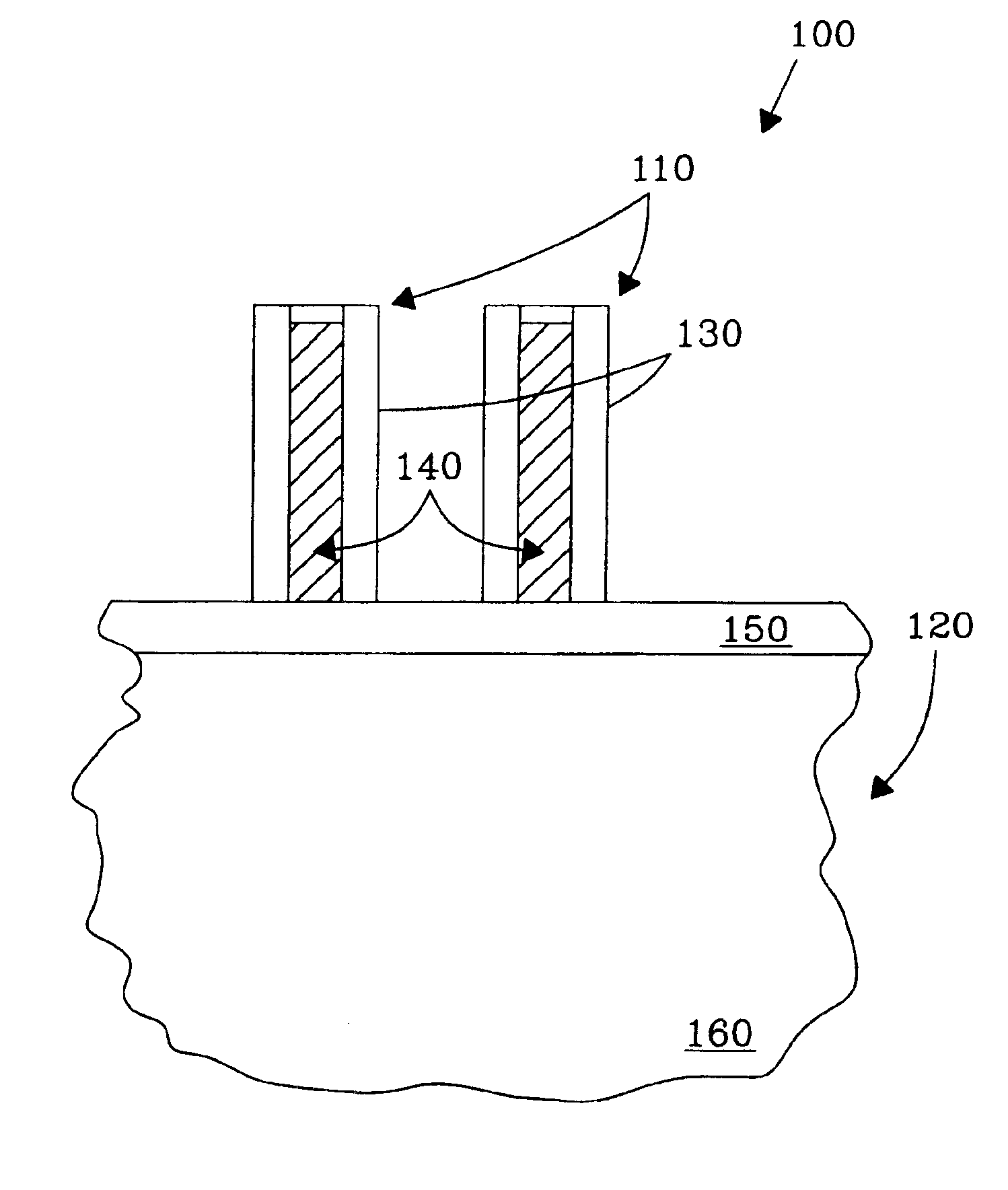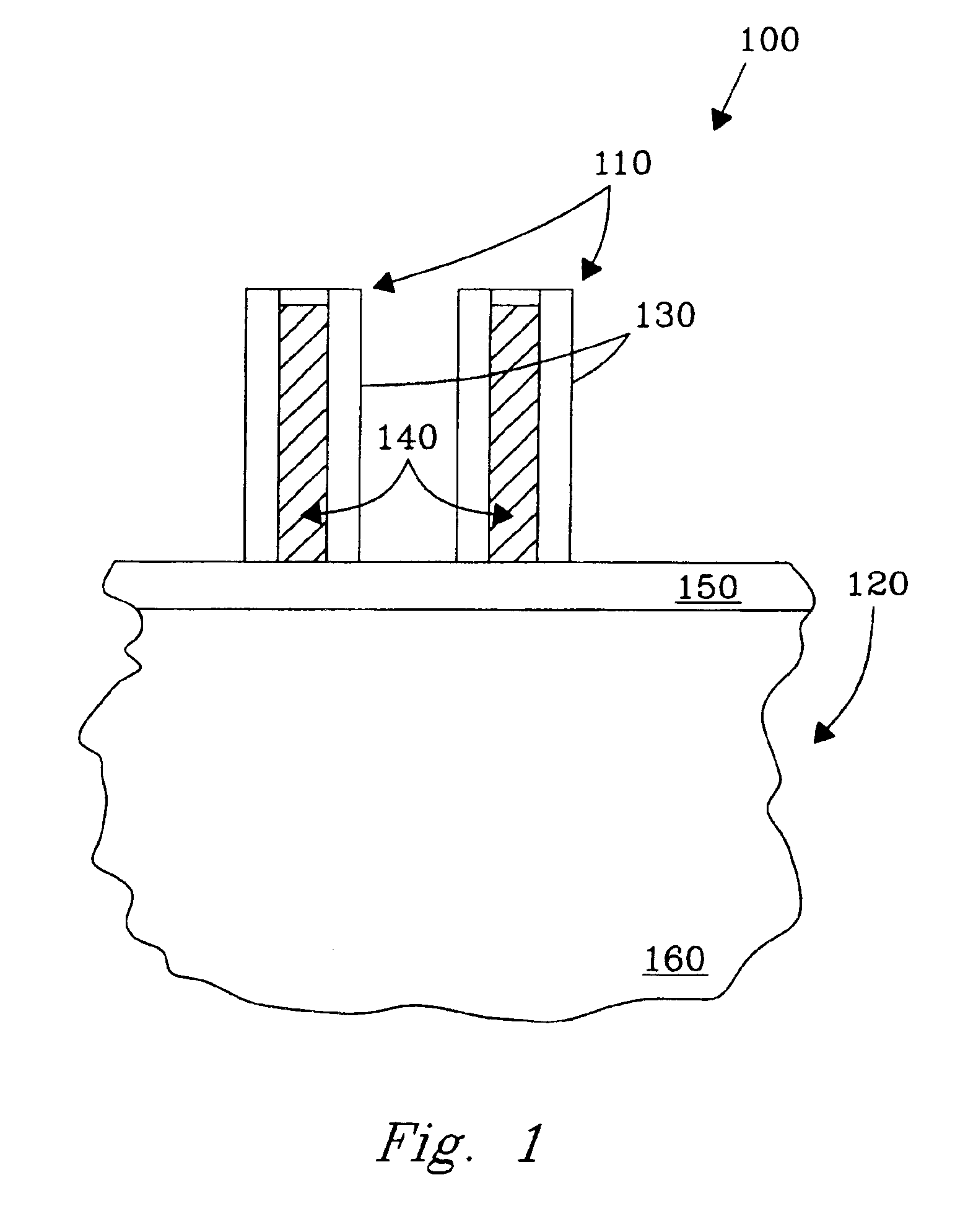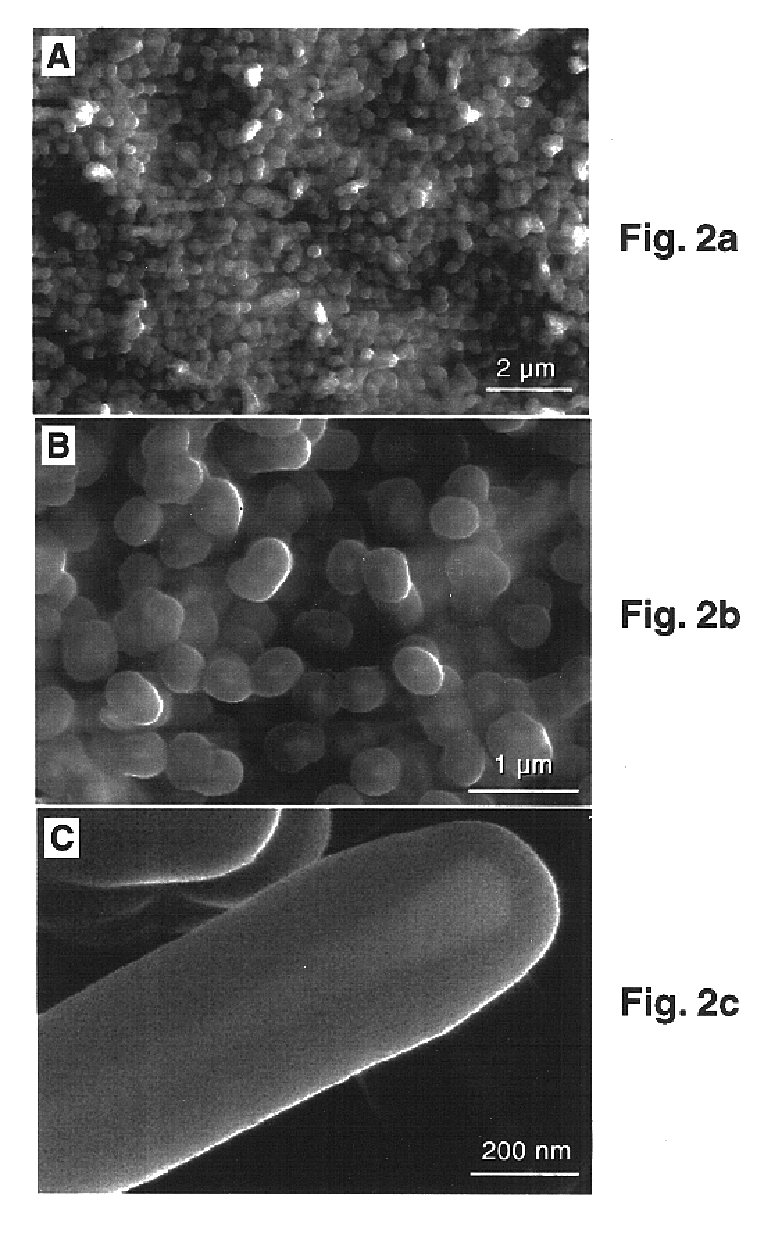Method of making carbon nanotubes on a substrate
- Summary
- Abstract
- Description
- Claims
- Application Information
AI Technical Summary
Benefits of technology
Problems solved by technology
Method used
Image
Examples
example 1
[0026]A number of conductive substrates were selected to investigate their effects on the formation of the filled carbon nanotubes. The formation of the filled nanotubes depends on the solubility of the iron (the catalyst) in the conductive substrate and the free energy of formation for the respective carbide phase. The conductive substrate materials selected included tantalum, silicon, and molybdenum. All of these materials can form stable carbides. Carbon nanotubes were deposited on the prepared substrates under the same growth conditions used for growth of carbon nanotubes using titanium conductive substrates. While dense arrays of filled carbon nanotubes were observed on tantalum conductive substrates similar to those shown in FIG. 2a, only curved hollow carbon nanotubes were formed on silicon conductive substrates. No carbon nanotubes were observed on molybdenum conductive substrates. For molybdenum conductive substrates, X-ray photoelectron spectrometry and backscattering elec...
PUM
| Property | Measurement | Unit |
|---|---|---|
| Temperature | aaaaa | aaaaa |
| Temperature | aaaaa | aaaaa |
| Length | aaaaa | aaaaa |
Abstract
Description
Claims
Application Information
 Login to View More
Login to View More - R&D
- Intellectual Property
- Life Sciences
- Materials
- Tech Scout
- Unparalleled Data Quality
- Higher Quality Content
- 60% Fewer Hallucinations
Browse by: Latest US Patents, China's latest patents, Technical Efficacy Thesaurus, Application Domain, Technology Topic, Popular Technical Reports.
© 2025 PatSnap. All rights reserved.Legal|Privacy policy|Modern Slavery Act Transparency Statement|Sitemap|About US| Contact US: help@patsnap.com



